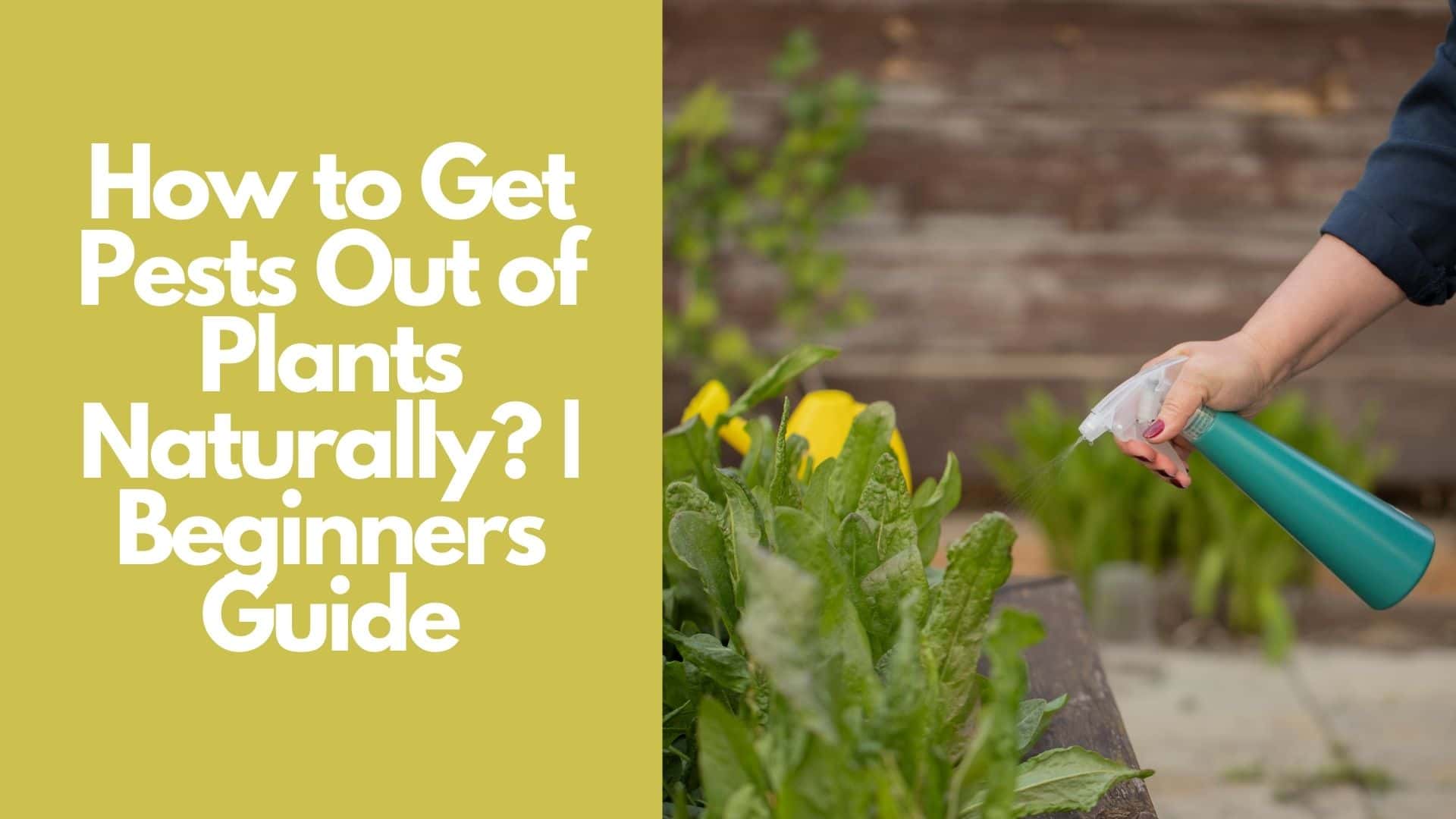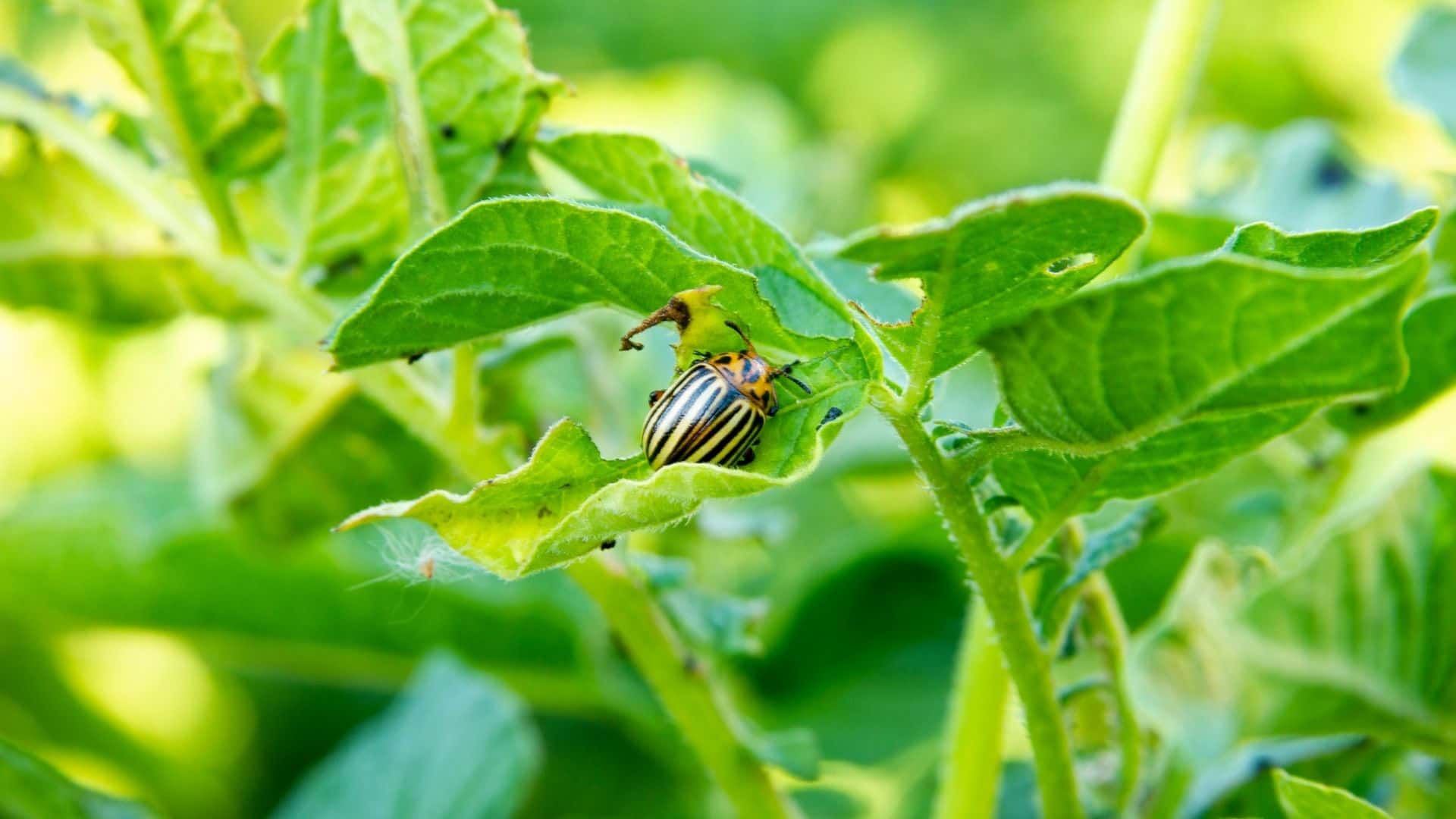Discover how to get pests out of plants naturally with this easy, proven guide. Learn safe, chemical-free solutions to protect your plants and keep your garden healthy year-round. Creating a pest-free garden is a challenge for every gardener. Even without pesticides, you can maintain a beautiful garden with natural, low-cost methods for dealing with garden pests instead of resorting to harsh chemicals.
There are many natural alternatives to chemical pesticides that can reduce pest populations without harming your plants, pets, or family members. By reading this guide, you will be able to know, How to Get Pests Out of Plants Naturally: 12 Smart Ways.

Let’s start,
What are the ways use to get pests out of plants naturally?
Here are 12 ways that can use to get pests out of plants naturally.
1. Use fertile soil to grow plants healthy
Plants with strong immune systems are better able to combat diseases and pests when the soil is healthy. Soils that are rich in nutrients feed and shelter soil life.
How to make fertile soil in the garden?
There are some methods that can use to make fertile soil and improve poor soil in your garden.
It is great to add organic matter to your garden soil. Create a compost bin and add one to two inches of well-decomposed compost to the garden each spring to help the soil retain nutrients and promote a healthy soil structure. Adding natural elements and compounds that deter pests will help keep your soil healthy.
Most garden pests, their eggs, and other harmful microorganisms will be killed by the heat so that cover your garden for a few months with black plastic. Removing the plastic should be followed by light cultivation of the soil. You’re all set to plant your seeds now.
Plants should be two to four inches high mulch. You can add grass clippings or mowed leaves to the garden. This will help with water conservation, weed suppression, and soil temperature regulation. It will also add organic matter to the soil that will decompose slowly.
2. Grow your plants in suitable spot
Plants that require full sun should only be used in areas with full sun or if plants need partial sun, select a suitable location. Planting crops based on water requirements is a good idea, too.
For crops that need more water to stay healthy, choose a location where the soil stays moist for a longer period of time.
When conditions aren’t ideal, crops can put up with it for a while before giving in to pests. Preventing garden pests is as simple as placing your plants in the proper location.
3. Companion planting
The practice of growing diverse plants together is called companion planting. This is a method of obtaining a benefit by growing two or more distinct plants next to one other.
Some plants have complementary qualities such as nutritional requirements, growth habits, or pest-repelling properties, attracting beneficial insects, certain pairings of plants are more productive.
Certain plants work as insect repellents or animal deterrents. As an example, garlic has an unpleasant odor that repels many pests.
Some plants attract beneficial insects as well. Borage attracts pollinating bees and small pest-eating wasps.
Many gardeners believe marigolds offer pest-repellent properties.
4. Water your plants early in the morning
Water is essential to photosynthesis, which takes place during the day for plants. Watering in the late afternoon or evening will also keep the leaves moist through the night, which creates an ideal environment for the growth of fungus and other diseases.
When watering, make sure to get the roots wet rather than the foliage.
5. Control weeds
Weeds compete with your plants for water, nutrients, and light, all of which are limited in supply.
They can also serve as a breeding ground for garden pest insects and parasites. Pull weeds and their roots out of the ground completely.
6. Increase the number of beneficial insects
Ladybugs are a more beneficial insect in the fight against garden pests. Their diet consists of aphids, mites, and the eggs and larvae of a wide variety of pests that damage plants.
Praying mantises, lacewings, and parasitic wasps are examples of beneficial garden insects.
7. Use natural horticultural oil
Spraying plant foliage with horticultural oil and water helps to keep plant foliage healthy. You can use it year-round as a dormant spray or in the growing season to kill insect pests and their eggs.
Neem oil
As a natural byproduct of the Neem tree, neem oil is a powerful insecticide that can be used to combat a wide range of garden pests. Garden centers all over the country sell it.
Various forms of neem oil exist, including concentrated oil and spray-ready versions. To ensure proper mixing and application, always refer to the product’s instructions. Neem oil burns skin if you use too much of it.
8. Use soaps or dishwashing liquid
Dish soap is a common household ingredient for blasting bugs, but the ratio of soap to water needs to be watched carefully. Your plants will die if you use too much soap on them.
Many pests can be deterred by spraying plants with diluted soap. Consider using a natural soap like castile soap that doesn’t contain any detergents or additives. Prove your soap solution works by spraying a small area with it before applying it to the entire plant.
If the spray damages the leaves, dilute them even more. Soap is effective at killing both pests and helpful insects.
How to make and use dishwashing liquid to plants?
Pour 1 quart of water into a dishwashing bowl and add 1.5 teaspoons of dishwashing liquid. To make sure you have the correct ratio, combine the ingredients in a larger container and then pour them into a spray bottle.
Spray the leaves to get rid of insects that have taken up residence there. Cover the leaf from top to bottom. Use early in the morning or evening but do not use in the middle of the day or when plants are directly exposed to the sun.
Until you see a difference, repeat the procedure every four to seven days and after heavy rain. Check daily your plants.
Place a small bucket or container filled with water and a few drops of dish soap below your plant to catch insects like beetles and squash bugs. As a result of the soap in the water, they will be unable to fly away. Because it’s not being applied directly to the plant’s leaves, the soap-to-water ratio isn’t as important. Make sure your solution is safe for your plants by testing a few leaves first.
9. Use vegetable oil
A vegetable oil insecticide, which works similarly to soap spray, is an effective way to get rid of harmful garden pests. The soap and oil mixture suffocates the pests and insects by coating their bodies with a thin layer of oil.
How to use vegetable oil for plants?
To 1 cup of vegetable oil, add 1 tablespoon of mild soap like dish soap or castile soap. Make sure everything is well-combined. Fill a spray bottle with 2 tablespoons of the oil mixture and 1 quart of water.
Apply a fungicide to the top and bottom of each leaf, as well as the stems, if necessary. Stopping and shaking the mixture a few times during application is likely to ensure that the soap, oil, and water are well blended. Apply it to plants early in the morning or evening.
10. Spray garlic for plants
You can use garlic as an insecticide and a deterrent by planting it in and around vegetable garden beds. Garlic spray concentrates are available at garden supply stores, or you can make your own at home.
How to make and use garlic spray?
Protect your hands by donning a pair of gloves. Few garlic cloves like 5 or 6, finely minced and go into a blender or food processor. Mix in 3 or 5 tablespoons of dish or castile soap with 5 cups of water. Vegetable oil, if desired can be included in the mixture at this point.
To remove any large pieces, pass the mixture through a cheesecloth or a fine strainer. Your concentration is the result of straining this mixture. Keep the concentrate in a tightly fitting jar at room temperature for up to a week.
When you’re ready to use it, add 3 cups of water to the entire solution. Coat the affected plants’ leaves on the tops and bottoms. The solution should be applied on a weekly basis or whenever there has been a lot of rain. Make sure your solution is safe for your plants by testing a few leaves first.
11. Spray vinegar solution
Slugs and moths are all deterred and killed by a simple vinegar solution. 20% vinegar with a higher acid concentration should never be used on plants because it will destroy them.
How to make and use vinegar solution?
To make a sprayable solution, mix one-part vinegar like apple cider or white vinegar with three parts water. Add a few drops of mild dish soap to help the solution adhere. Mix all ingredients in a spray bottle and saturate the base of infested plants with the solution. If the infestation is severe, treat the leaves directly.
Slugs and snails will be lured to their doom if you use vinegar instead of beer to attract them. Weeds can be controlled with a three-part vinegar-to-one-part-water spray.
Do not use vinegar solution after sundown or in the early morning. If you use too much vinegar, your plants will be damaged. Use the solution seven to ten times a week.
12. Make a bird house, bird bath or bird feeder near the garden
Birds are beneficial garden occupants since they eat a lot of insects. Place a birdbath frequently supplied with fresh water in your garden area to attract bug-eating birds. In addition, put up a bird feeder nearby.
The garden will already be their safe refuge, and when summer arrives, they’ll be able to graze on the available insects. Birds are very helpful to the garden to get rid of garden pests. Unlike hens, they won’t scratch or destroy plants or devour veggies.
Watch does companion planting works to deter pests | Video
Top 5 FAQs & answers related to How to get pests out of plants naturally: 12 top tricks
How to get rid of tomato hornworms?
The best solution is handpicking and dropping it into soapy water. You can also spray the foliage with Bacillus thuringiensis, a soil-dwelling bacterium that acts as an insecticide when ingested. Introduce beneficial insects to your garden.
What are pest-free vegetables?
Garlic, onions, radishes, and leeks are some pest-free vegetables to grow in your garden. The pests, insects do not prefer the smell of these vegetables so that they are pest-free.
Which companion herbs can grow with tomatoes?
There are a lot of herbs that can grow with tomatoes. Some of them are basil, chives, parsley, garlic, asparagus, and borage, etc.
How to use eggshells to get rid of pests?
It is very simple to use eggshells to create pests-free gardens and this is a durable method. After the eggshells have been crushed, scatter them throughout your garden in areas where slugs and other crawling pests are a problem.
Which smells repel pests?
Pests and insects hate peppermint, lavender, and geranium smells. So grow them in your garden.
Conclusion
By reading this guide, I hope you got the full idea of How to Get Pests Out of Plants Naturally: 12 Top Tricks.
Please share this How to Get Pests Out of Plants Naturally: 12 Top Tricks with your friends and do a comment below about your feedback.
We will meet you on next article.
Until you can read, 10 Easiest and Low-Maintenace Vegetables to Grow at Home | Guide
